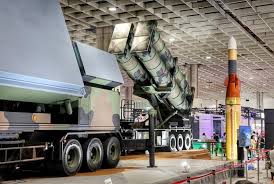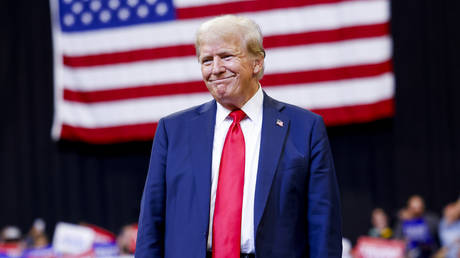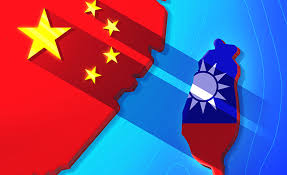Richard Sanders
The Taipei Aerospace and Defense Exhibition officially opened yesterday, marking a significant milestone with the display of 51 new military systems and a record-breaking number of participating exhibitors. The three-day event, which runs through tomorrow at Taipei Nangang Exhibition Center’s Hall 1, features 490 exhibitors across 1,500 booths—more than doubling the number from last year’s event, which had 275 exhibitors and around 960 booths.
The exhibition highlights Taiwan’s ongoing efforts to enhance its self-defense capabilities and foster international cooperation. Notably, the United States has expanded its presence at the event, with the US pavilion doubling in size over the past two years and now hosting more than 40 American companies. Karin Lang, Deputy Director of the American Institute in Taiwan, emphasized the importance of collaboration between American and Taiwanese firms in addressing regional security challenges. “When American and Taiwan companies collaborate, they create solutions that enhance not just bilateral interests, but contribute to broader regional security and prosperity,” she stated during the opening ceremony.
A major highlight of this year’s exhibition is Taiwan’s debut of its first missile jointly produced with a US company, symbolizing a significant milestone in the growing defense cooperation between the two nations. The event also features signed agreements with US and Canadian firms to co-develop advanced weaponry, including anti-drone rockets from Canada’s AirShare and underwater surveillance drones from US-based Anduril. Earlier this year, Taiwan’s Chungshan Institute of Science and Technology (NCSIST) teamed up with Anduril to produce the Barracuda-500, an autonomous cruise missile, and yesterday, the institute signed an agreement to co-produce Anduril’s underwater drone. These are Taiwan’s first joint manufacturing initiatives with foreign companies, said NCSIST President Lee Shih-chiang.
“Our goal is that if war or a blockade begins, we will be able to manufacture every weapon we need to defend ourselves,” Lee stated. The focus of these collaborations is on achieving mass producibility and sustainable local manufacturing, with plans to develop a fully operational supply chain within 18 months using 100% Taiwanese components.
The Defense Ministry’s pavilion showcases a comprehensive array of military hardware and technology, divided into sections on joint operations weapons, uncrewed systems, dual-use technologies, and talent recruitment. Highlights include the American-made M1A2T Abrams Tank, the High Mobility Artillery Rocket System, and other advanced weaponry such as the Chiang Kung missiles and Humvee-mounted anti-tank systems. The display reflects Taiwan’s revised multidomain deterrence strategy, which emphasizes diverse capabilities to counter potential threats.
In light of lessons learned from the Ukraine conflict, the exhibition emphasizes unmanned systems, featuring 19 systems including attack drones, autonomous vehicles, surface, and underwater vehicles. Displays of drones like the Switchblade 300 and ALTIUS 600M underscore Taiwan’s focus on developing asymmetric warfare techniques and expanding its domestic drone industry.
The event also introduces cutting-edge dual-use technologies, including electromagnetic pulse-shielding windows and advanced security monitoring systems, demonstrating Taiwan’s commitment to technological innovation and economic growth through defense self-reliance.
Public interest remains strong, with previous exhibitions drawing around 40,000 attendees. This year, organizers have added interactive exhibits, guided tours, and recruitment areas to engage the public further.
Taiwan is aiming to increase its defense budget to 5% of GDP by 2030, up from 3.3% next year. Analysts estimate this ramp-up in spending could lead to total military procurement worth between US$50 billion and US$60 billion, much of which will support both domestic manufacturing and international acquisitions, primarily from the United States, according to US-Taiwan Business Council President Rupert Hammond-Chambers.
As tensions in the region persist, Taiwan’s strengthened defense efforts and international collaborations signal a determined push for security and self-sufficiency.



